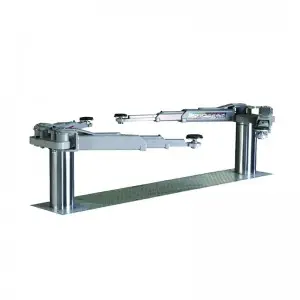Cylinders have a long and rich history that dates back thousands of years. These geometric shapes have captivated the curiosity of inventors, architects, and engineers alike, thanks to their remarkable properties and versatile applications. From the ingenious inventions of ancient civilizations to the cutting-edge developments in modern engineering, cylinders have left an indelible mark on human civilization.
One of the earliest known uses of cylinders can be traced back to the ancient Mesopotamians, who utilized cylindrical seals made of stone or clay to mark their important documents. These cylindrical seals were intricately carved with intricate motifs and symbols, allowing for a unique and identifiable mark on legal and administrative records. This early use of the cylinder showcased its practicality and symbols of authority.
In ancient Egypt, another remarkable utilization of the cylinder was discovered in the form of cylindrical jars. These jars, often made of alabaster or granodiorite, were commonly used to store valuable commodities, such as oils, perfumes, and precious substances. The shape of the cylinder provided stability, preventing spillage and ensuring the preservation of these valuable resources. The Egyptians also employed cylindrical columns in their magnificent architectural structures, most notably in the iconic Great Hypostyle Hall at Karnak Temple.

The Fascinating History and Versatile Uses of the Cylinder: From Ancient Inventions to Modern Engineering Marvels
The Greeks, famous for their advancement in various scientific disciplines, recognized the mathematical elegance of the cylinder. The renowned mathematician and inventor Archimedes played a pivotal role in examining the properties of the cylinder. His pioneering work established the relationship between the volume and surface area of a cylinder, which continues to be a fundamental concept in geometry and calculus. Archimedes also developed the Archimedes screw, a cylindrical device that is still used today in various applications, such as irrigation and wastewater treatment.
During the Renaissance period, cylinders continued to inspire innovation across multiple fields. Italian polymath Leonardo da Vinci, known for his numerous inventions and artistic creations, explored the concept of cylindrical flying machines. While these designs were not realized during his lifetime, they showcased the visionary thinking and possibilities offered by the cylinder.

The Fascinating History and Versatile Uses of the Cylinder: From Ancient Inventions to Modern Engineering Marvels
Fast forward to the Industrial Revolution, and cylinders became central to the development of steam engines. Inventors such as James Watt refined the design of the cylinder and piston system, enabling the efficient conversion of steam energy into mechanical work. This breakthrough ignited a new era of industrialization, powering locomotives, factories, and various machinery that propelled humanity into the modern age.
Today, cylinders play a crucial role in numerous industries and technologies. In automotive engineering, cylinders are fundamental components of internal combustion engines that power vehicles worldwide. These cylinders work in synchrony to generate the controlled explosive energy required for propulsion. Additionally, cylinders are core components in hydraulic and pneumatic systems, enabling the controlled movement and transfer of fluids and gases in machinery and equipment.
The field of architecture and structural engineering has also welcomed the cylinder with open arms. Cutting-edge modern buildings, like the Guggenheim Museum in New York City, showcase the aesthetic appeal and structural stability of cylindrical forms. The cylindrical tower of the Burj Khalifa in Dubai exemplifies the possibilities of combining engineering marvels with architectural brilliance, as it stands as the world’s tallest structure.

The Fascinating History and Versatile Uses of the Cylinder: From Ancient Inventions to Modern Engineering Marvels
As our understanding of materials science and manufacturing processes continues to advance, cylinders are taking on even more extraordinary forms. From composite carbon fiber cylinders used in aerospace applications to high-pressure gas cylinders utilized for divers exploring the ocean depths, these innovations demonstrate the ever-expanding potential of cylinders in the modern world.
In conclusion, the cylinder’s journey through history has been a remarkable one, showcasing its significance in various civilizations and its undeniable impact on human progress. Whether ancient seals, storage jars, or modern-day engines and architectural feats, cylinders continue to shape the world around us. The ingenuity and versatility of the cylinder are boundless, pushing the boundaries of what is possible and inspiring future generations of inventors and engineers.quicklift car lift
